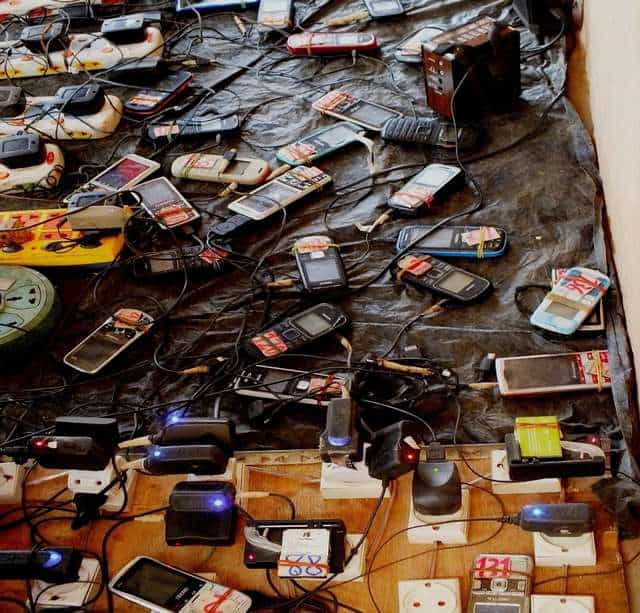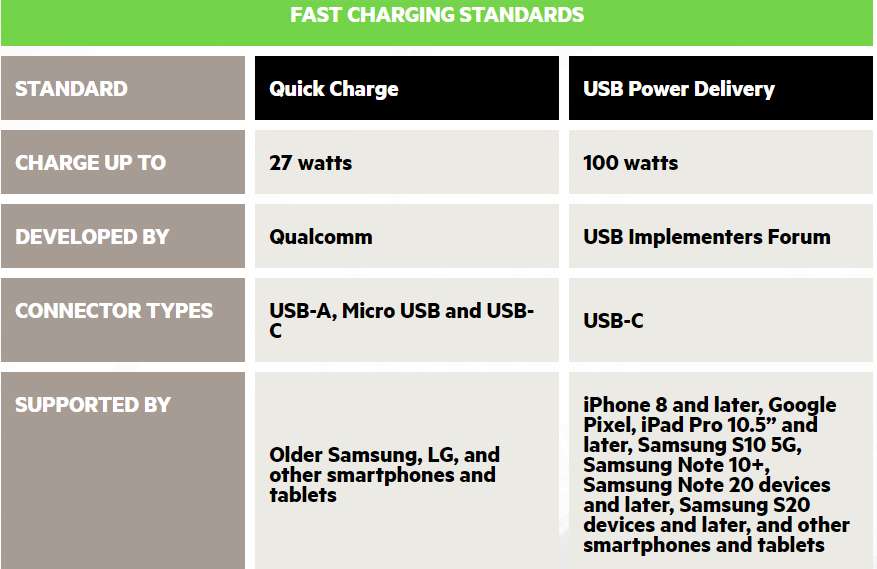Fast Charging is no new word in the dictionary of core technologies used in today’s mobile phones. In fact, major cell phone vendors, including Samsung and Huawei, boast about it. What makes the fast charging concept so popular and commercially viable? Follow along with a curious mind, as this article lays a better understanding of how fast-charging really works in mobile phones.

Let’s begin.
The Lithium-ion Battery before Fast Charging – SLOW!
What happens when you touch a hot pan? A wild guess is you scream “ouch,” followed by quick removal of your hand from the hot pan. What just happened is a transfer of heat from its high potential, “the hot pan,” to a lower potential, “your hand” in this case. Whenever there is a gradient of a sort, the transfer happens. The same concept is used when charging and discharging a mobile phone’s battery.

A phone’s battery has two terminals called electrodes. When charging it, there are chemical reactions in the battery that create a potential difference/gradient between the two terminals. This gradient causes a transfer of electrons from the higher electron potential terminal to a lower electron potential terminal. Technically, this transfer of electrons is named electricity. A full battery equates to a maximum potential gradient being reached, and a low battery equates to no potential gradient between the terminals.
A battery is like a power tank. It gets filled up when electricity is passed through it during charging. The battery’s electricity flow causes chemical reactions to bring about a potential difference between the battery terminals. A mobile phone’s battery charging capacity describes the maximum rate at which electricity can deliver power to it. Fast charging generally means the rate at which power is delivered is higher, so charging to a full capacity occurs in minutes rather than hours.
A mobile phone that is not equipped for fast charging standards and says that using a conventional USB rate can have about 2.5 W of power delivered, meaning 2.5 Joules of energy are being given to the battery per second to fill it up. This does not sound bad at all. However, the big screen and many applications that today’s mobile phones come clothed with, say 2.5W are not enough. Necessity is the mother of invention. It was necessary to meet mobile phones’ increased power consumption needs hence fast charging techniques being invented.
Managing the Charging Process
Lithium-ion batteries cannot accept an overcharge. We cannot overfill the power tank. To ensure this strict rule is followed, inside every mobile phone, there is a charge controller circuit that acts as a manager of the charging process. The charge controller typically breaks down the charging process into two parts. The first part is called the constant Current phase, and the other is the constant Voltage phase.
During the constant Current phase, maximum electricity is allowed to flow through the battery from the power source. This causes the potential difference between the battery’s terminals to increase to a peak value quickly. This stage occurs faster than the second stage, and it is responsible for filling the battery tank from 0 to about 60 percent. (The exact percentages are different for different mobile phone vendors.)
After the peak potential difference is reached, the constant Voltage stage begins. Voltage, by the way, is a measurement of a potential difference the same way Degree Celsius measures Temperature. The charge controller begins to reduce the amount of electricity that flows through the battery at this stage. The reduction causes the potential difference or Voltage between the battery’s terminals to increase slowly. The phone now begins to charge slowly. This happens from about 60 to 100 battery percentage charge. (Again, exact values are mobile phone vendor dependant.)
The reasons the charge controller takes the initiative of reducing the electricity flow after the peak voltage is reached are understandable. Lithium-ion batteries cannot absorb an overcharge. A very high potential difference between its terminals stresses the battery and causes the metallic Lithium plating. This compromises safety and the battery’s lifetime.
The Basic Concept of Fast Charging
The concept of fast chargers is primarily based on two principles. The first is that a battery’s charging time can be reduced significantly if more current can flow through the battery during the constant current phase. The second is Ohm’s Law, which states that voltage applied is directly proportional to current. Increasing Voltage then increases Current.
The Fast Chargers have inside of them circuits more optimized than those in standard chargers to efficiently step-down voltage from the power supply to a higher voltage than the one offered by standard chargers. A higher output voltage means more current can be delivered to the battery during the constant current phase. A typical charger without fast charging has a power rating of 5W (5V/1A). On the other hand, Fast chargers with Qualcomm Quick Charge can deliver about 27 W (9V/3A). The increased power delivery means a mobile phone battery can charge from 0 to 50 percent in just under 30 minutes.

Common Fast Charging Technologies
Multiple technologies in the market can deliver charging speeds faster than the conventional standard of 5 Watts. The mobile phone, the charger, and the cable that connects them should use a compatible charging standard for fast charging to work.

Many known fast charging standards vary between hardware manufacturers. Different versions of fast charging technologies may bring some confusion and incompatibilities. The most common fast chargers are:
- USB PD
- QUALCOMM Quick Charge
- Samsung Adaptive Fast Charge
- Apple Fast Charging
- Huawei Supercharge
- Motorola TurboPower
- and many more (Oppo Vooc, One Plus Dash Charge, MediaTek Pump Express, etc.).
Each of the manufacturers also has developed different versions of supercharging technologies. For instance, Huawei Supercharge 1.0 is 5V 5 A and 25W, while the next 2.0 version is 10V 4A and 40W.
Summary
Mobile phone technology has evolved for the better. Fast Charging is simply a concept that improves how power tanks in mobile phones are charged. It is important to highlight that this concept can only work well for you if your mobile phone, cable, and charger use a compatible fast-charging standard.





